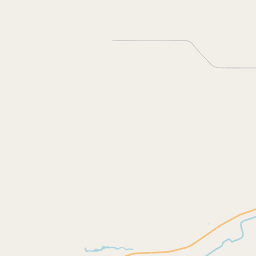Fort McKavett, C.S.A.
Historical marker location:






Located 21 miles west. Upon secession, Confederate cavalry occupied this post to give protection against Indians. Early in 1862 this fort confined group of Union troops from surrendered U.S. forts who were seeking to leave the state at start of Civil War. Permanent personnel left the post in April 1862 when the frontier defense line was pulled back more than 60 miles east. However scouting parties and patrols of confederate and state troops used the fort intermittently in aggressive warfare to keep Indians near their camps and away from settlements and to check on invasion by Union forces. Usually supplying their own mounts, guns and sustenance, these men guarded the frontier until war's end.
Texas had 2000 miles of coastline and frontier to defend from Union attack, Indian raids, marauders. Defense lines were set to give maximum protection with the few men left in the state. One line stretched from El Paso to Brownsville. Another had posts set a day's horseback ride apart from Red River to the Rio Grande. Fort McKavett and other U.S. forts used by scouting parties lay in a line between. Behind these lines and to the east organized militia, citizens' posses from nearby settlements backed the Confederate and state troops to curb Indian raids.
A memorial to Texans who served the confederacy
Erected by the State of Texas 1963
As one of the most visible programs of the Texas Historical Commission (THC), historical markers commemorate diverse topics in Texas history, including: the history and architecture of houses, commercial and public buildings, religious congregations, and military sites; events that changed the course of local and state history; and individuals who have made lasting contributions to the state, community organizations, and businesses.
The University of Texas at Austin, founded in 1883, is one of the largest universities in the United States and has produced many notable alumni, including several U.S. presidents.
In the mid-19th century, Menard County was primarily used for cattle ranching, and it experienced growth with the arrival of European settlers. The county was officially established in 1858 and named after Michel Menard, an early Texas empresario. The community of Menard, located in the county, served as the county seat.
During the American Civil War, Menard County was mostly pro-Confederate, with many residents serving in the Confederate Army. The war disrupted the region's ranching economy, but it recovered in the post-war years. The discovery of silver and lead deposits in the area brought temporary mining activity, but it quickly declined.
Throughout the 20th century, Menard County's economy remained based on ranching, though it faced challenges such as droughts and the economic instability of the Great Depression. Today, the county continues to be primarily rural and agricultural, known for its cattle ranches and natural beauty. Menard County offers recreational activities such as hunting, fishing, and camping, attracting visitors who appreciate its historical heritage and scenic landscapes.
Menard County Timeline
This timeline provides a concise overview of the key events in the history of Menard County, Texas.
- 1836: Menard County is officially established on January 27, becoming one of the original 23 counties in Texas.
- 1852: Fort McKavett is established in present-day Menard County as a military outpost.
- 1871: Gold is discovered in Menard County, leading to a short-lived gold rush in the area.
- 1875: Menardville, the county seat, is officially incorporated.
- 1891: The railroad reaches Menardville, helping to stimulate economic growth in the county.
- 1920s: Menard County experiences a decline in population due to factors such as drought and the Great Depression.
- 1972: The Texas Historical Commission designates Menardville as a State Archeological Landmark.
- 2004: Menard County celebrates its 168th anniversary since its establishment.